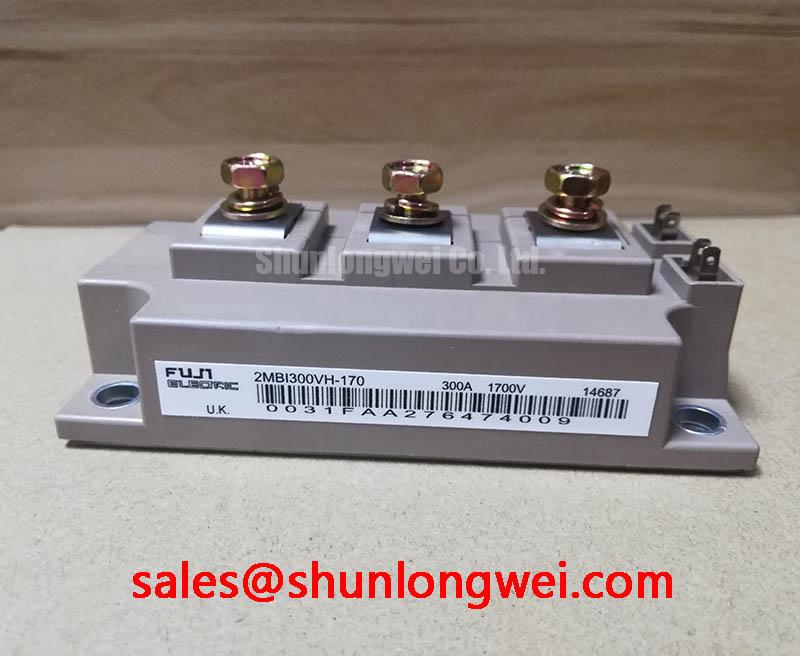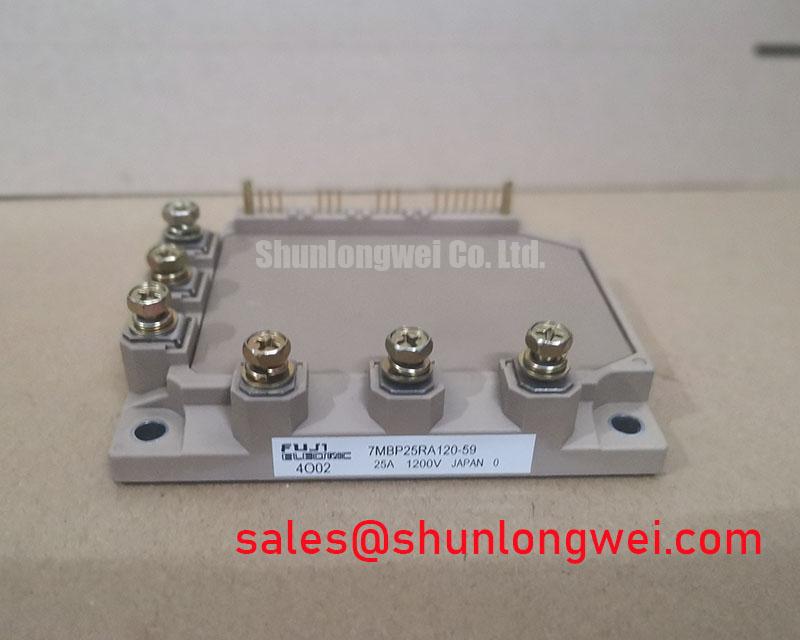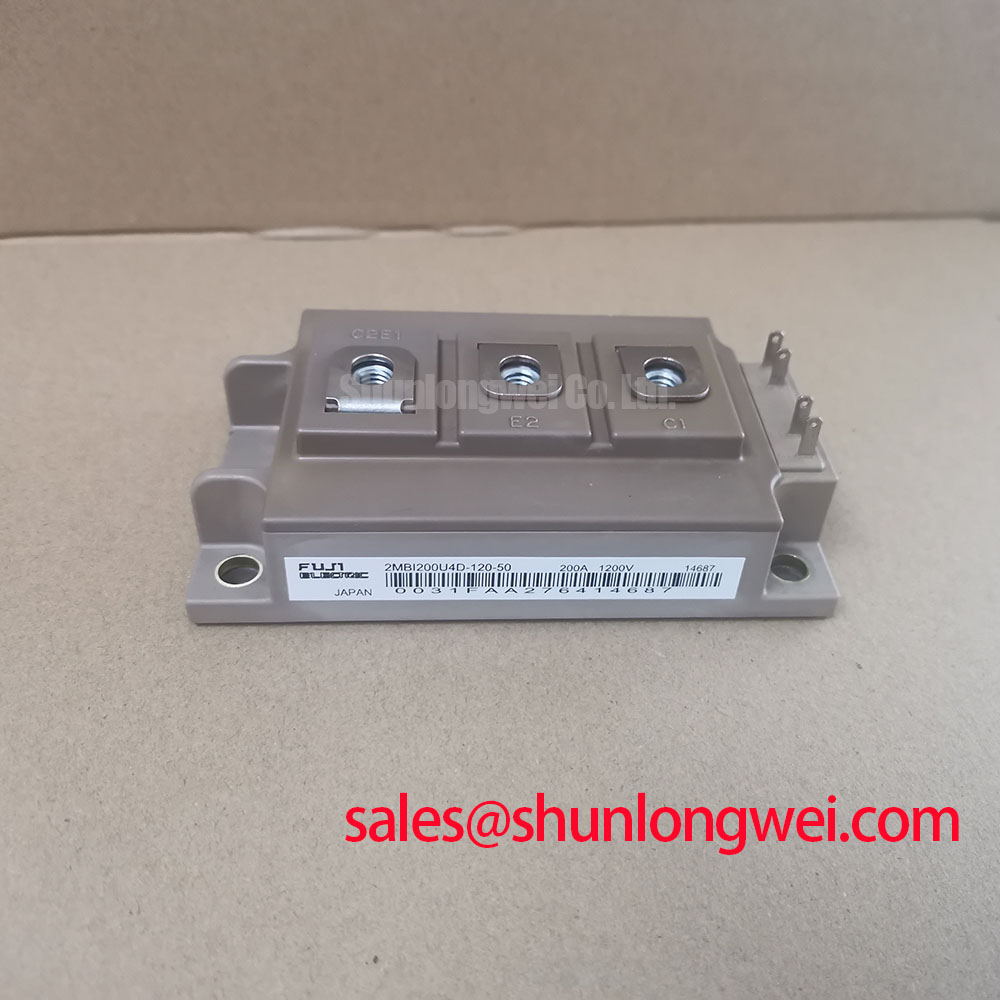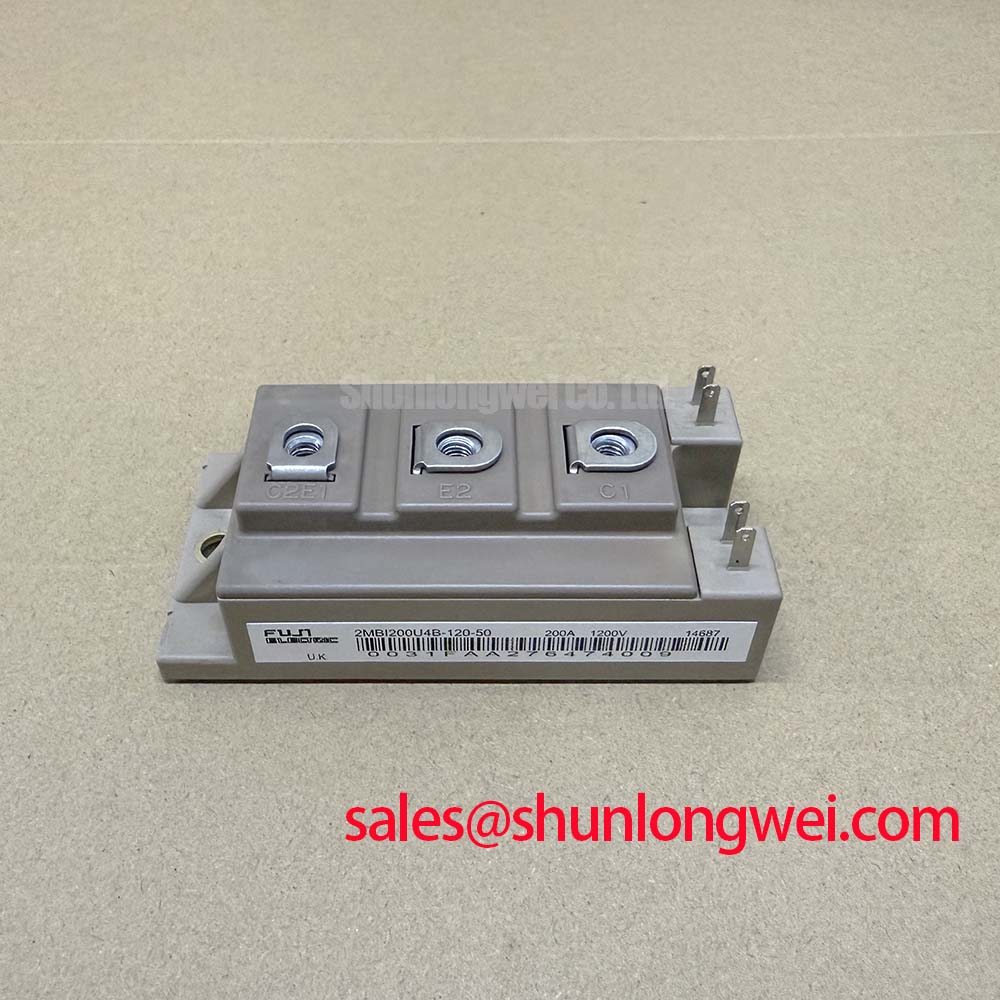Content last revised on November 19, 2025
2MBI300VH-170-50 Technical Analysis: A 1700V IGBT for High-Efficiency Power Conversion
Engineered for high-voltage, high-frequency applications, the Fuji Electric 2MBI300VH-170-50 is a dual IGBT module from the V-Series designed to minimize total power losses. With core specifications of 1700V | 300A | 2.15V typical VCE(sat), this module delivers two critical engineering benefits: it enables higher switching frequencies and significantly reduces overall system losses. It directly addresses the need for high-efficiency power conversion in systems operating on elevated DC bus voltages, such as 1000V solar inverters. For high-frequency converters operating on 1000V DC buses, the 2MBI300VH-170-50's V-Series technology offers an optimal balance of switching speed and low conduction loss.
Key Parameter Overview
Performance Benchmarks for High-Voltage Designs
The specifications of the 2MBI300VH-170-50 are tailored for robust performance in demanding power systems. The 1700V collector-emitter voltage provides a substantial safety margin for inverters connected to 800V-1000V DC links, a common architecture in large-scale renewable energy systems. The low saturation voltage is a key differentiator, directly contributing to lower conduction losses and improved thermal performance.
| Parameter | Symbol | Value | Conditions |
|---|---|---|---|
| Collector-Emitter Voltage | VCES | 1700 V | Tj = 25°C |
| Continuous Collector Current | IC | 300 A | Tc = 100°C |
| Collector-Emitter Saturation Voltage | VCE(sat) | 2.15 V (typ.), 2.60 V (max.) | IC = 300A, VGE = 15V, Tj = 25°C |
| Total Power Dissipation | PC | 1600 W | Per device at Tc = 25°C |
| Thermal Resistance (Junction to Case) | Rth(j-c) | 0.048 °C/W (IGBT), 0.080 °C/W (FWD) | - |
| Maximum Junction Temperature | Tj(max) | 175 °C | - |
Download the 2MBI300VH-170-50 datasheet for detailed specifications and performance curves.
Application Scenarios & Value
Achieving System-Level Benefits in High-Power Converters
The Fuji Electric 2MBI300VH-170-50 is engineered for applications where high voltage and switching efficiency are paramount. Its design provides tangible value in modern power electronic systems.
A primary application is in large-scale solar inverters. In a 1000V DC utility-scale solar farm, engineers face the challenge of maximizing power conversion efficiency to improve the Levelized Cost of Energy (LCOE). The 2MBI300VH-170-50's low switching losses (Eon and Eoff) allow designers to increase the system's switching frequency. This, in turn, enables the use of smaller and lighter magnetic components, reducing the overall size, weight, and cost of the inverter system without compromising on output power quality. What is the main benefit of its V-series technology? It directly enables more compact and cost-effective system designs through higher frequency operation.
Other key applications include:
- Variable Frequency Drives (VFDs): In industrial motor drives operating on higher voltage grids, this module's efficiency reduces waste heat, simplifying thermal management and improving the drive's long-term reliability.
- Uninterruptible Power Supplies (UPS): For data centers and critical infrastructure, the module's high reliability and low-loss operation contribute to a lower Total Cost of Ownership (TCO) by minimizing energy consumption.
- Industrial Welding Machines: The fast switching capability allows for precise control over the welding arc, leading to higher quality welds.
While the 2MBI300VH-170-50 is optimized for high-voltage systems, applications with a 600V to 800V DC bus may find a 1200V module such as the 6MBI450U-120-02 to be a suitable alternative depending on specific voltage margin requirements.
Frequently Asked Questions (FAQ)
How does the V-Series technology in the 2MBI300VH-170-50 benefit high-frequency designs?
Fuji Electric's V-Series technology is specifically developed to reduce switching losses, particularly the turn-on (Eon) and turn-off (Eoff) energy. This allows engineers to operate the module at higher switching frequencies (e.g., above 10 kHz) with less efficiency penalty. This is crucial for reducing the size of passive components like inductors and capacitors, leading to higher power density and lower system cost.
What is the significance of the 1700V VCES rating for system-level design in renewable energy applications?
The 1700V rating provides the necessary voltage margin for reliable operation in systems with a 1000V DC bus, which is common in modern utility-scale solar inverter architectures. This margin is critical for handling voltage overshoots caused by stray inductances during fast switching events, ensuring the long-term reliability of the inverter under real-world operating conditions.
With a typical VCE(sat) of 2.15V, what impact does this have on the thermal management strategy for a 300A application?
A lower VCE(sat) directly translates to lower conduction losses (P_cond = VCE(sat) * Ic). At 300A, this results in significantly less heat generated during the on-state compared to modules with higher saturation voltages. This reduction in waste heat simplifies the thermal management system, potentially allowing for a smaller, more cost-effective heatsink and improving the overall reliability by maintaining lower junction temperatures.
Can the 2MBI300VH-170-50 be used in parallel to achieve higher current ratings?
Yes, IGBT modules like the 2MBI300VH-170-50 can be paralleled. However, successful paralleling requires careful attention to the gate drive design and the physical layout of the busbars to ensure balanced current sharing. For a comprehensive design, it is recommended to consult Fuji Electric's application notes on paralleling IGBT modules to mitigate risks of thermal runaway and ensure symmetrical switching behavior.
Technical Deep Dive
Analyzing the Trade-Offs Between Conduction and Switching Losses
In power electronics design, the total power loss in an IGBT is the sum of conduction losses and switching losses. The 2MBI300VH-170-50 is engineered to optimize this balance for high-frequency applications. Conduction loss, determined by VCE(sat), is akin to the friction in a pipe when water is flowing—it's a constant source of energy loss when the device is on. With a low typical VCE(sat) of 2.15V, this module minimizes that "frictional" heat.
Switching loss, however, is the energy consumed each time the device turns on and off, much like the effort needed to open and close a heavy valve. In systems like high-frequency solar inverters or welding supplies, this "valve" operates thousands of times per second. The V-Series technology focuses on making this switching action as efficient as possible, reducing the energy (Eon and Eoff) lost with each cycle. This characteristic is critical because as frequency increases, switching losses become the dominant factor in total power loss and heat generation. An effective gate drive design is essential to fully leverage these fast-switching capabilities.
Industry Insights & Strategic Advantage
Meeting Efficiency Mandates in Renewable Energy and Industrial Automation
The deployment of the 2MBI300VH-170-50 aligns with key industry trends pushing for greater energy efficiency and power density. In the renewable energy sector, improving the power conversion efficiency of inverters is not just a technical goal; it's a financial imperative that directly impacts project viability. Every watt lost to heat is a watt not sold to the grid. To visualize this, think of energy loss as a "leaky bucket"—the lower VCE(sat) and switching energy of this IGBT module effectively plug these leaks, ensuring more generated power reaches the end customer.
Similarly, in industrial automation, standards such as IEC 61800 for adjustable speed drives are increasingly stringent about efficiency. By using components like the 2MBI300VH-170-50, system designers can more easily meet these regulations, reduce operational energy costs for the end-user, and build more compact, powerful motor control systems that fit into modern, space-constrained factory environments.
Strategic Considerations
The Fuji Electric 2MBI300VH-170-50 represents a strategic choice for engineers developing next-generation power conversion systems. Its V-Series technology provides a robust foundation for designs that must balance the competing demands of high voltage, high frequency, and high efficiency. By integrating this module, engineering teams can achieve superior power density, enhance system reliability through better thermal performance, and meet the increasingly strict efficiency standards governing the industrial and renewable energy sectors. It is a component that enables a direct path to smaller, more efficient, and more cost-effective power electronic solutions.











